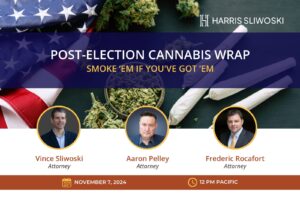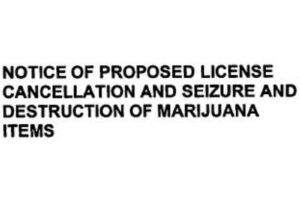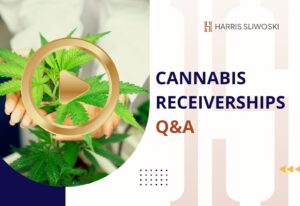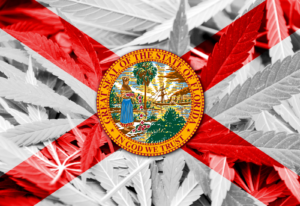Earlier this month, Oregon Governor Kate Brown signed into law HB 3000, an omnibus bill covering a wide range of hemp-related issues. Unlike other cannabis bills passed last session, HB 3000 was written to take effect on passage, so it is now law. One of the important HB 3000 terms is a restriction on the sale of specific consumable hemp items, namely “adult use cannabinoids” and “adult use cannabis items,” to anyone under the age of 21.
HB 3000 defines “adult use cannabinoids” to include, but is not limited to:
tetrahydrocannabinols, tetrahydrocannabinolic acids that are artificially or naturally derived, delta-8-tetrahydrocannabinol, delta-9-tetrahydrocannabinol, the optical isomers of delta-8-tetrahydrocannabinol or delta-9-tetrahydrocannabinol and any artificially derived cannabinoid that is reasonably determined to have an intoxicating effect.
“Adult use cannabis item,” on the other hand, means:
- A marijuana item;
- An industrial hemp commodity or product that meets the criteria in OAR 845-026-0300; or
- An industrial hemp commodity or product that exceeds the greater of:
- A concentration of more than 0.3 percent total delta-9-tetrahydrocannabinol; or
- The concentration of total delta-9-tetrahydrocannabinol allowed under federal law.
In addition, the new Oregon law tasked the Oregon Liquor Control Commission, which will be known as the “Oregon Liquor and Cannabis Commission” as of next Monday, August 2 (“OLCC”), in collaboration with the Oregon Health Authority (“OHA”) and the Department of Agriculture (“ODA”), to establish the concentration of adult use cannabinoids at which a hemp commodity or product qualifies as an adult use cannabis item. To respond to the urgency that the Oregon legislature placed on this issue, the Commission implemented this rule through the temporary rulemaking process just four days following the enactment of HB 3000.
Pursuant to OAR 845-026-0300, an industrial hemp commodity or product is an adult use cannabis item if it:
- Contains 0.5 milligrams or more of any combination of:
- Tetrahydrocannabinols or tetrahydrocannabinolic acids, including delta-9-tetrahydrocannabinol or delta-8-tetrahydrocannabinol; or
- Any other cannabinoids advertised by the manufacturer or seller as having an intoxicating effect;
- Contains any quantity of artificially derived cannabinoids (i.e., “a chemical substance that is created by a chemical reaction that changes the molecular structure of any chemical substance derived from the plant Cannabis family Cannabaceae”); or
- Has not been demonstrated to contain less than 0.5 milligrams total delta-9-THC when tested in accordance with Oregon law.
The new regulation further provides that if the hemp commodity or product qualifies as an adult use cannabis item it cannot be sold or delivered to a person under 21 years of age, unless it is sold by an OLCC licensed marijuana retailer that is registered to sell or deliver marijuana items to a registry identification cardholder who is 18 years of age or older or to anyone registered under the state’s medical marijuana program.
This 0.5 milligrams limit is a major change because determining the amount of THC in milligrams (weight) in a hemp product or commodity is different from using the overall percentage of THC contained in the product.
To help hemp companies determine whether their hemp commodity or product is below the 0.5 milligrams threshold, the three Oregon agencies released joint guidelines last week that, in part, explain how to perform the calculation. Here is how it works: A company must multiply the “THC” in mass (mg/g) found on their their product Certificate of Analysis (“COA”) by the weight of the item listed on the package. More simply put, if their hemp item weighs 1 gram and the THC listed on the COA is 3.3 mg/g, then the total THC would be 3.3 mg (3.3 x 1), which means the hemp item could not be sold to a minor because it contains more than 0.5 milligrams of THC.
While these new regulations prevent hemp companies whose products exceed the 0.5 milligrams threshold from selling their products to minors, they do not affect other sales and business activities. That said, it is plausible that once it goes through the permanent rulemaking process, the OLCC may decide to impose additional restrictions and requirements on these products so hemp companies should closely monitor this process and keep an eye out for any other guidelines the OLCC may issue to ensure continued compliance.
























